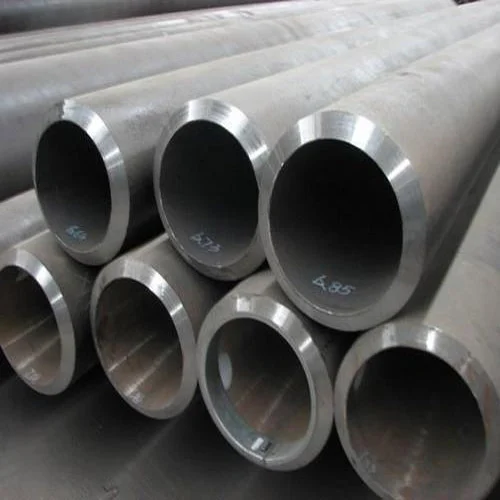
Alloy 255 (UNS S32550) is a super duplex stainless steel composed of a balanced mixture of austenite and ferrite in its microstructure. This unique dual-phase composition provides Alloy 255 with the best characteristics of both types of stainless steel—making it stronger and more corrosion-resistant than most standard austenitic or ferritic grades.
Chemical Composition (Typical):
Chromium: 24–26%
Nickel: 4–6%
Molybdenum: 3–5%
Copper: 1.5–2.5%
Nitrogen: ~0.2%
Iron: Balance
This carefully balanced alloy composition helps Alloy 255 achieve excellent resistance to pitting, crevice corrosion, and stress corrosion cracking (SCC)—even in harsh environments like seawater and aggressive chemicals.
High Corrosion Resistance
Alloy 255 Super Duplex Steel is designed to withstand highly corrosive environments. Its high levels of chromium, molybdenum, and nitrogen provide it with a PREN (Pitting Resistance Equivalent Number) over 40, making it suitable for:
Seawater applications
Acidic environments
Chloride-rich conditions
Exceptional Mechanical Strength
The yield strength of Alloy 255 is nearly twice that of conventional austenitic stainless steels. This enables the use of thinner material sections without sacrificing strength or safety, which can lead to cost savings and reduced weight in critical structures.
Alloy 255 maintains strength and corrosion resistance even under elevated temperatures. It also has lower thermal expansion and higher thermal conductivity compared to austenitic grades, making it well-suited for heat exchangers and pressure vessels.
Although higher in strength and more challenging to machine than typical stainless steels, Alloy 255 can be fabricated using common shop tools with proper techniques. It is readily weldable, provided proper heat control and procedures are followed to avoid phase imbalance.
Thanks to its durability, strength, and corrosion resistance, Alloy 255 is widely used in:
Marine & Offshore Engineering: Piping systems, pumps, propeller shafts,
seawater cooling systems
Chemical Processing: Tanks, agitators, and pipelines exposed to
sulfuric, nitric, or phosphoric acid
Pulp & Paper Industry: Digesters, bleach washers, and other corrosive
chemical handling systems
Desalination Plants: Tubing, evaporators, and condensers exposed to
saline environments
Oil & Gas Industry: FSubsea equipment, manifolds, separators, and heat
exchangers
Power Generation: Flue gas scrubbers, cooling towers, and structural
components
Long-Term Reliability: With reduced maintenance requirements and longer
service life, Alloy 255 offers dependable performance in extreme environments.
Cost Efficiency: Higher strength leads to lower material usage,
reducing overall fabrication and installation costs.
Enhanced Safety: Its mechanical robustness and resistance to chemical
attack enhance operational safety, especially in offshore and chemical industries.
Sustainability: Being corrosion-resistant and fully recyclable, Alloy 255 contributes to greener industrial operations.
Welding Alloy 255 requires proper procedures to prevent loss of corrosion resistance. Low heat input and interpass temperatures are essential, and post-weld heat treatment is generally not required. For machining, carbide tooling and slower speeds help achieve better results due to its hardness.
Alloy 255 Super Duplex Steel represents the next level of material performance for industries facing corrosive and high-stress conditions. With its excellent blend of corrosion resistance, strength, weldability, and longevity, Alloy 255 proves to be a practical and cost-effective choice for mission-critical applications.
If you're in search of a high-performance alloy that can deliver results even in the harshest environments, Alloy 255 should be at the top of your list. Partner with a trusted supplier who understands duplex and super duplex materials to get the most out of your investment.